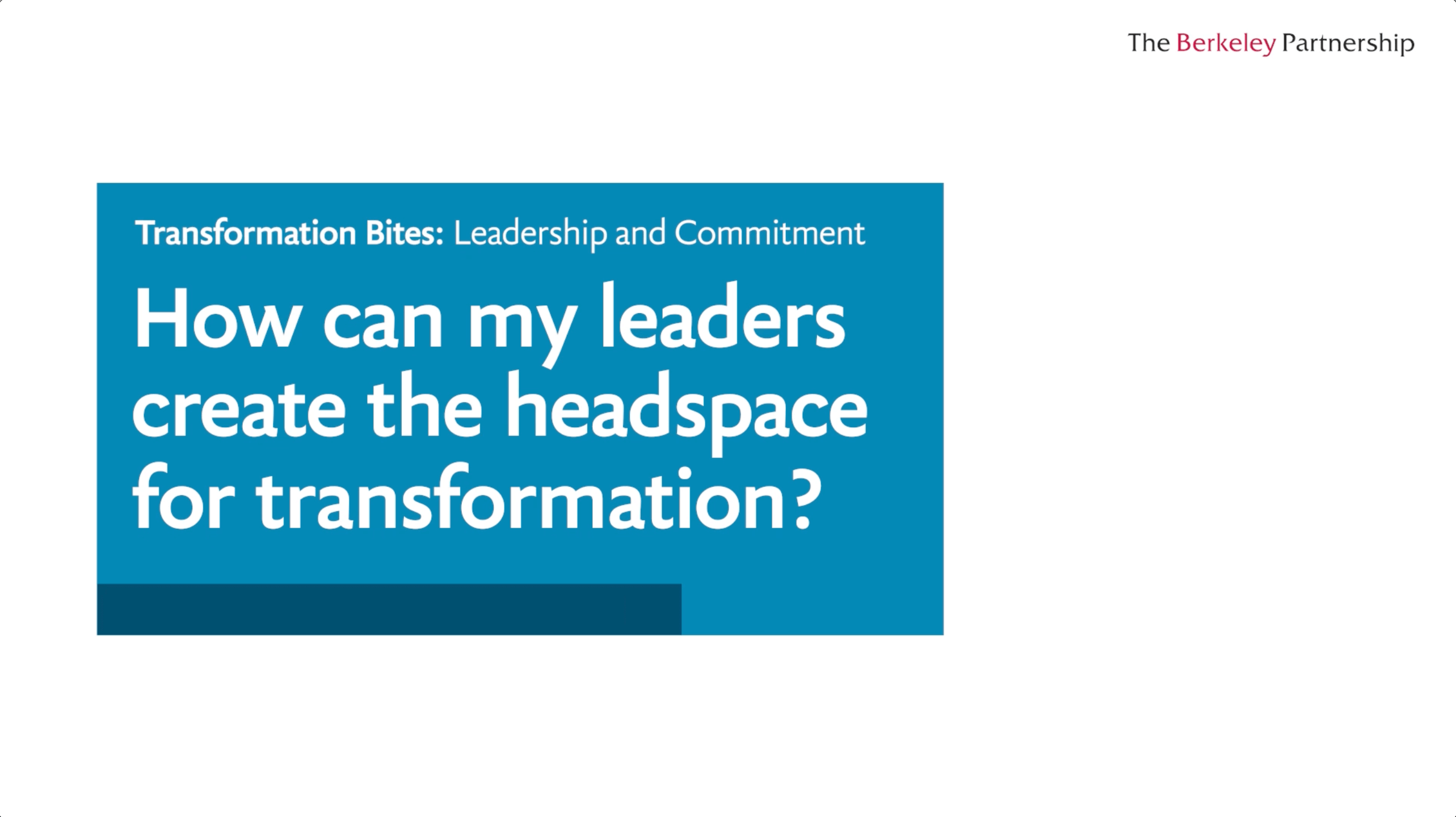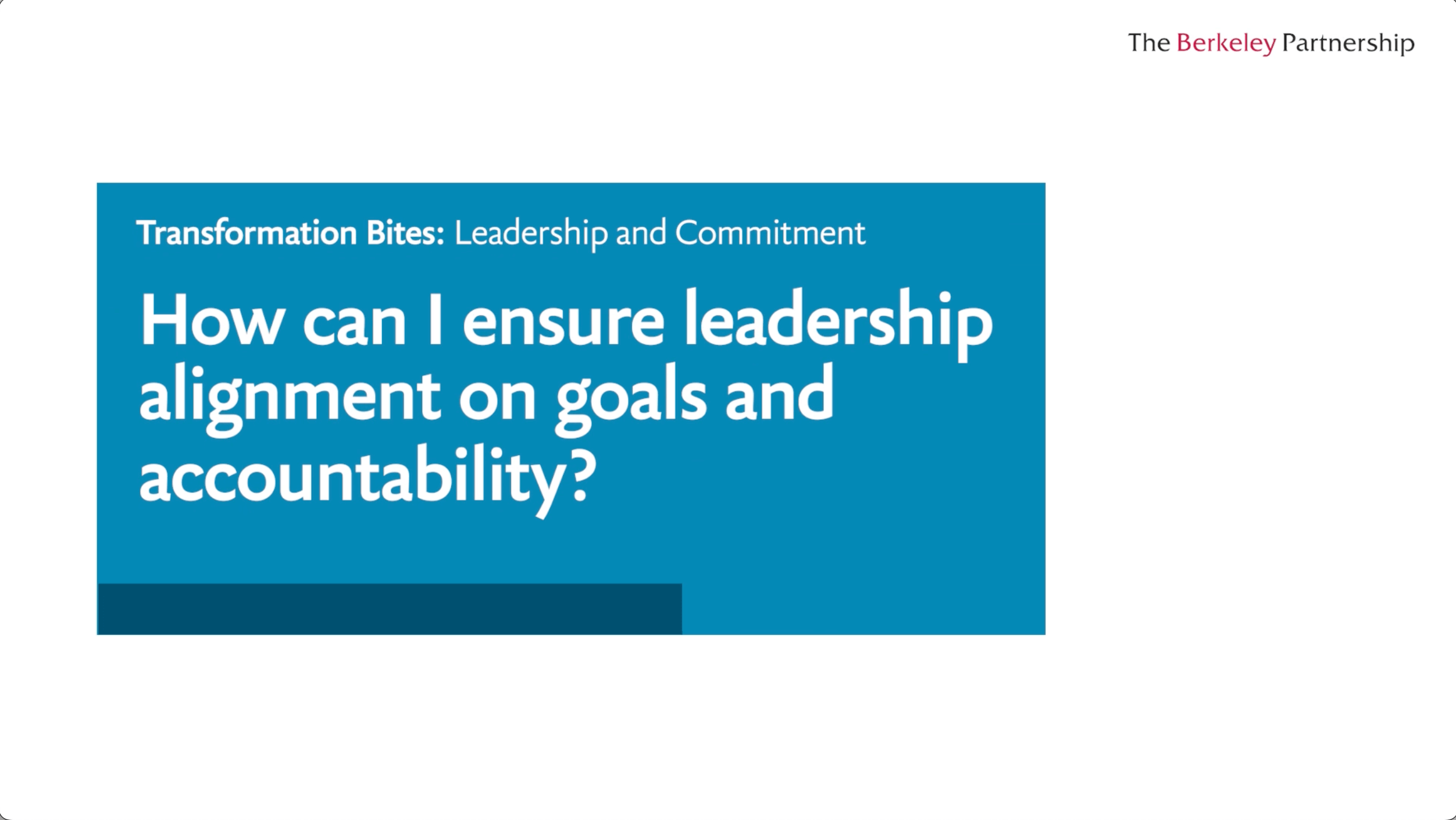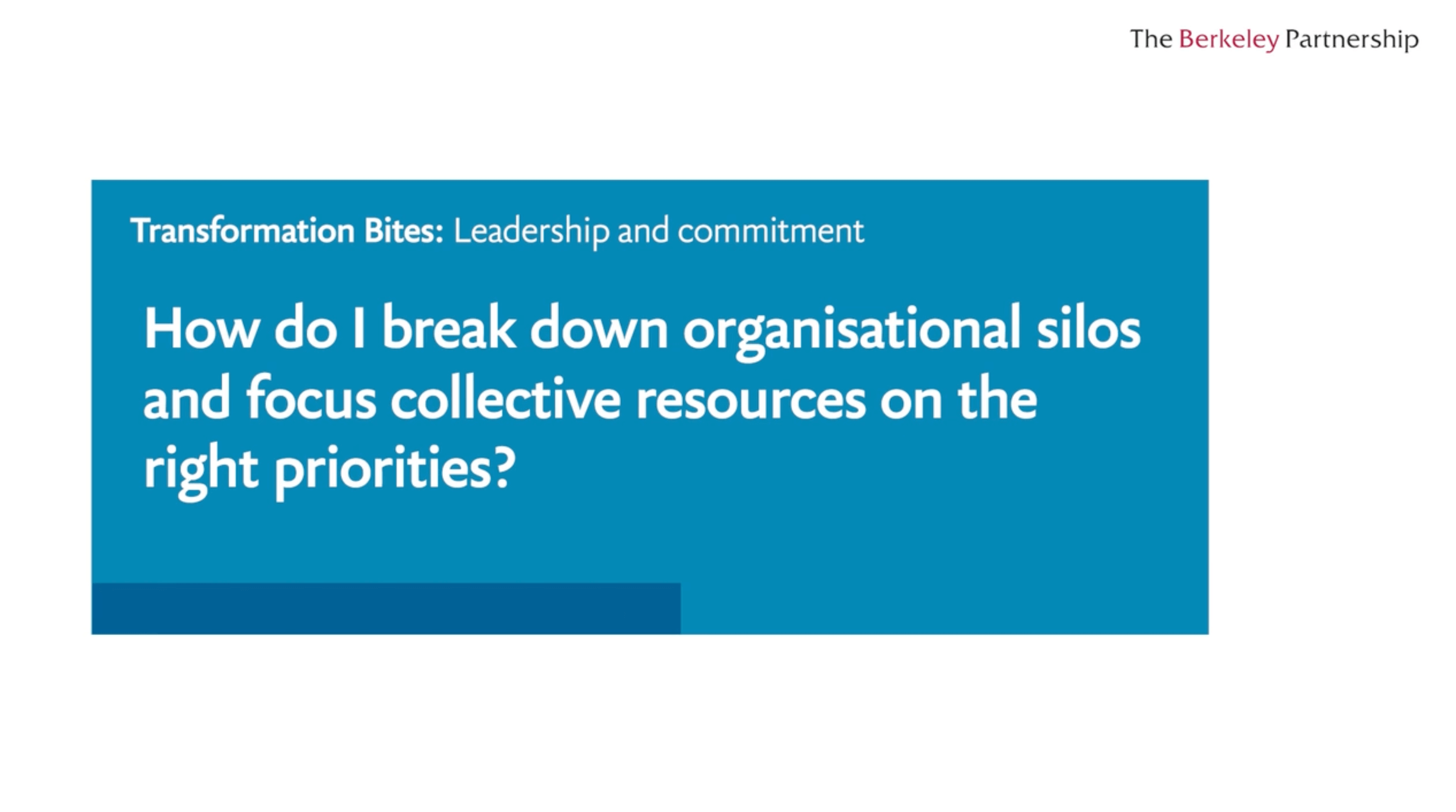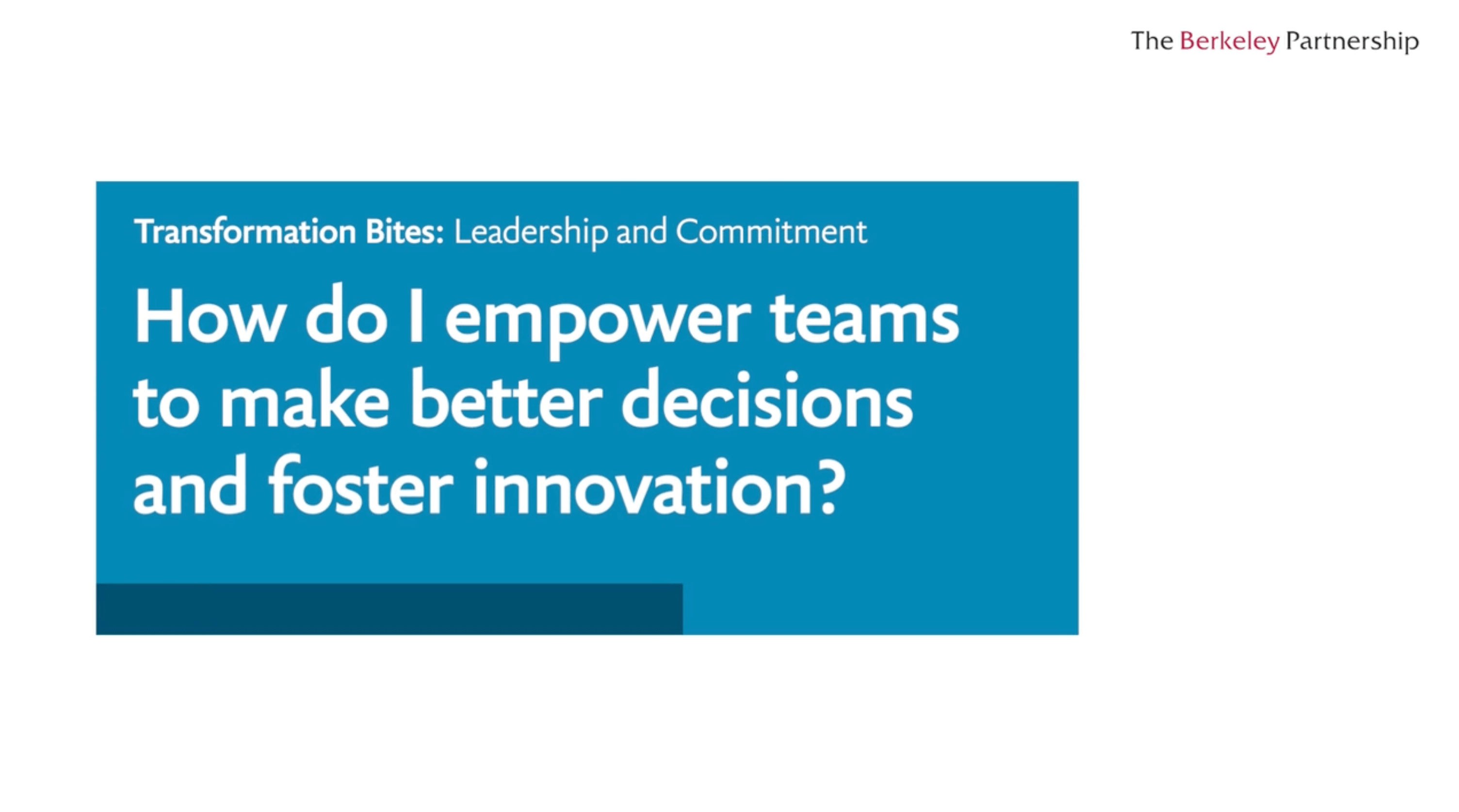Transformation
Transformation: Leadership and commitment
Watch now: How can I make transformation real for everyone?
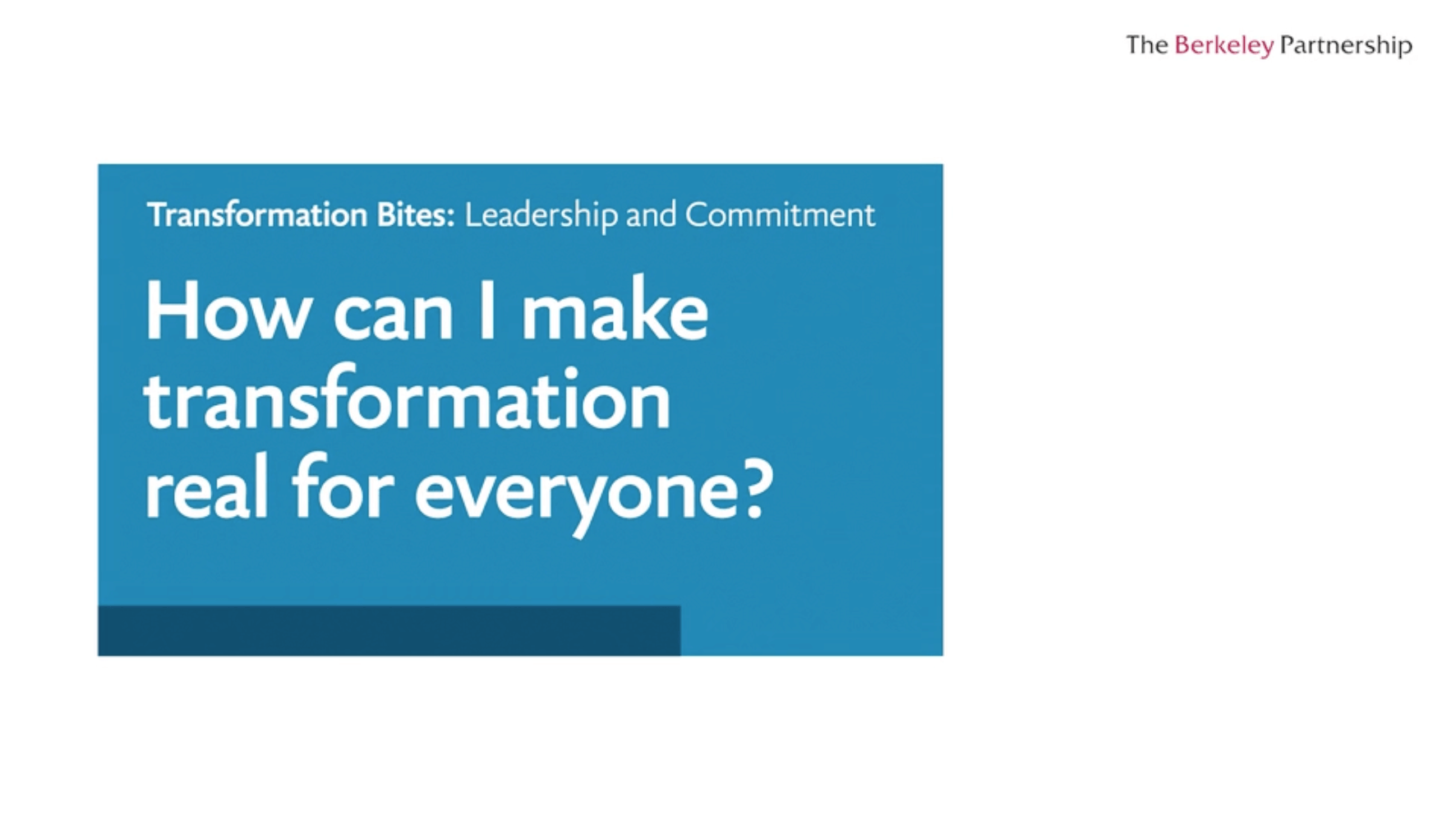
Sandy: The temptation is to engage people in your organisation only when you feel you have all the answers, the braver and more effective thing to do is to communicate early and honestly. Give people a voice in that transformation. Involve them from the start in a meaningful way to get them on board to provide their support and wider engagement. We've seen that some of the best ideas can come from the more junior members of the team. As you're communicating and engaging. Make sure the transformation is brought to life for each individual, so that they understand how it impacts them and their teams. Explain the reasons and the benefits for the future and illustrate what role they will play. When you're on a transformation journey. There is no such thing as over engagement or over communication, the more the better.

